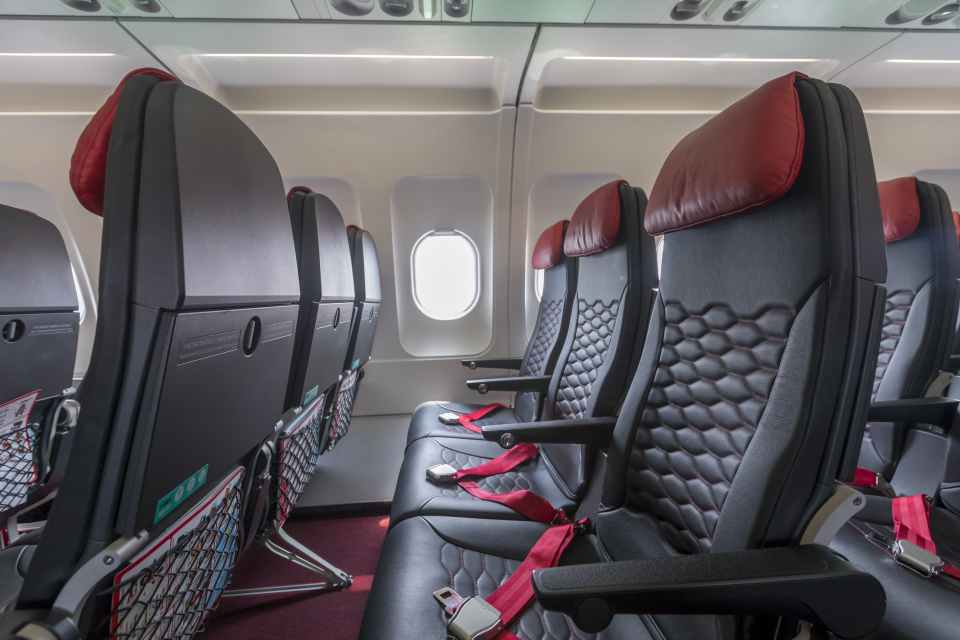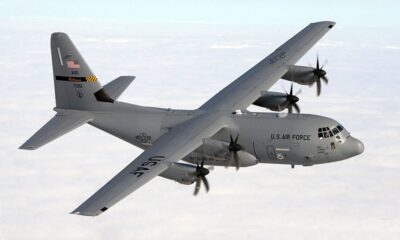Airlines
Least Legroom Airline Unveiled—And It’s Neither Ryanair nor easyJet

When booking a flight, comfort is often a top priority for travelers, and legroom plays a crucial role in ensuring a pleasant journey. However, not all airlines are equal when it comes to offering spacious seating.
Recent analysis has uncovered the airline with the least legroom, highlighting the challenges passengers may face on long-haul flights. In a surprising twist, a new airline has taken the title for the least legroom on flights, dethroning budget carriers EasyJet and ryanair seats, which are often criticized for their cramped seating.
In this article, we delve into the details, revealing which airline ranks lowest in seat space and what it means for travelers looking to maximize comfort during their flights.
Why do Ryanair seats have NO back pockets?:Click here
A 2023 survey compared the legroom and seat width offered by 12 major airlines on short-haul flights departing from the UK, as reported by the Liverpool Echo. The study focused on “seat pitch”—the distance between a seat and the one in front—to determine the available legroom.
Aer Lingus, Lufthansa, and KLM emerged as the top providers of spacious seating, with seat pitches ranging from 31-32 inches, 29-33 inches, and 30-32 inches, respectively. Conversely, Wizz Air and TUI were found to offer the least legroom, with a seat pitch of just 28 inches, placing them at the bottom of the list.
Least legroom airlines
Aer Lingus – 31-32 inches
British Airways – 29-31 inches
EasyJet – 29 inches
Jet2 – 28-31 inches
KLM – 29-33 inches
Lufthansa – 30-32 inches
Norwegian – 29-31 inches
Ryanair – 30 inches
TAP Portugal – 28-31 inches
TUI – 28 inches
Vueling – 29-30 inches
Wizz Air – 28 inches
Which U.S. Airlines Offer the Most and Least Legroom for 2024?

Airlines
US DOT Approves Merger: Alaska Airlines & Hawaiian Airlines Finalize Deal

In a significant development for the aviation industry, the U.S. Department of Transportation (DOT) has issued an order granting an exemption for the transfer of international route authorities in the merger of Alaska Airlines and Hawaiian Airlines.
The merger, which is expected to be completed in the coming days, represents a major consolidation in the airline sector. Under the terms of the exemption, Alaska Airlines and Hawaiian Airlines are required to adhere to several key public-interest protections.
Emirates Rolls Out Refurbished Boeing 777s Across Six U.S. Destinations
These stipulations are aimed at preserving service quality and consumer benefits as the merger progresses. Specifically, the airlines must protect the value of rewards, maintain existing service levels on crucial Hawaiian routes to the continental U.S. and inter-island routes, and support rural services.
Additionally, they are required to ensure competitive access at the Honolulu hub airport, offer fee-free family seating, provide alternative compensation for controllable disruptions, and lower costs for military families.
This proactive approach by the DOT marks a new phase in the Department’s merger review process. For the first time, airlines are required to agree to binding, enforceable public-interest protections as a condition for closing their merger.
Japan Airlines Rolls Out Free Domestic Flights to International Passengers
This move highlights the DOT’s commitment to safeguarding public interests and ensuring that mergers do not undermine service quality or competition. As part of the merger agreement, Alaska Airlines will assume approximately $900 million in Hawaiian Airlines’ debt.
Despite this substantial financial responsibility, Alaska plans to retain Hawaiian as a separate brand, which will negate the need for repainting aircraft. To secure approval from the DOT, the airlines agreed to maintain current service levels on key routes where competition is limited.
The exemption granted by the DOT allows Alaska and Hawaiian to finalize their merger while remaining separate and independently operated until the Department completes its review of the transfer application. If the transfer is approved, the public-interest protections will remain in effect for six years.
-

 Travel2 months ago
Travel2 months agoAir India to Expand US Operations with Three New Routes After a Decade
-

 Aviation3 weeks ago
Aviation3 weeks agoNew EU Carry-On Rules Begin September 2024: What to Expect
-

 Aviation1 week ago
Aviation1 week agoBoeing confirms 797: A New Era for Mid-Size Aircraft
-

 Airlines2 months ago
Airlines2 months agoAir India Rolls Out A350s for Delhi-New York JFK and Newark Routes
-

 Travel2 months ago
Travel2 months agoWhy We Should Avoid These Stamps in a Passport
-

 Aviation1 week ago
Aviation1 week agoLockheed and Tata Team Up to Build C-130J MRO Facility in India
-

 Aviation1 month ago
Aviation1 month agoMeet WindRunner: The World’s Heaviest and Largest Aircraft Ever Built
-

 Airport2 months ago
Airport2 months agoTop 10 Largest Airports in the World by Size







